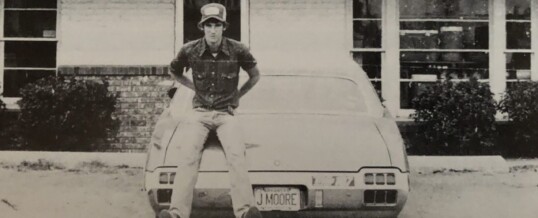
Recently, I saw something I haven’t seen in many years. A young man driving a car he was fixing up.
It was an older Mustang. By older I mean a 90’s model.
The car had spots of primer, there were a few dents, and the exhaust system appeared to be loose.
But this young man was driving with the top down, smiling as he went.
It took me back 50 years.
My first car was a Mustang. A 1966 model; white with red interior. The car had been my father’s. It didn’t need any restoration, but I was still constantly trying to tweak it to make it mine.
The first thing I did was acquire an under-dash 8-track and a set of Jensen speakers from Service Merchandise and install them.
Instead, I could have saved my money for an under-dash air conditioner, but when you’re 16, priorities are priorities. The latest tunes from Boston and Led Zeppelin are more important than not sweating.
I wasn’t the only guy who spent all of his time and money on his ride. In the 60’s and 70’s, just about every guy did that.
But we had to work with what we had. And what we had were some of the best vehicles that ever rolled off the American assembly lines. We were driving the adult’s leftovers. And their leftovers had excellent high-performance engines.
Even the granny cars.
Back then, it wasn’t uncommon for folks to keep their vehicles for three to five years and then trade them in. If you got 100,000 miles out of a car or truck, you were doing great. Engines didn’t last as long as the ones they manufacture today.
So, you could buy these trade-ins for a few hundred dollars and either rebuild the engine and transmission, or replace them.
And boy, did we.
All of the guys taught each other how to work on vehicles. If someone was under an oak tree in their front yard pulling an engine, you helped.
That’s how you learned.
Then, when you needed help, folks would show up for you.
By about the 10th grade, most fellas knew as much about the drive trains of 65 to 72 model Fords, GM’s, and Chryslers than kids today know about video games. And that’s saying a lot.
And we shared parts. If someone needed a carburetor for a Pontiac Firebird and you had one, you either sold it to them at a fair price or you traded for a part they had that you needed.
There was no Internet, and no companies were making reproduction parts. After about seven years from the day a car was made at the factory, often they stopped making parts for it.
So, if you bought a 1967 Ford pickup that had a few whiskey dents in the fender, you had to know where to get another fender from an existing truck.
Consequently, this was the heyday of auto junkyards. They were everywhere. And they were needed.
In the beginning, lots of guys learned about fixing up cars from our dads. I spent many a Saturday, and Sunday after church, riding in my dad’s 1963 Ford Falcon looking for another 63 Falcon that was no longer being driven.
Dad might have needed a window roller, door lock, radio, or any other part that could be pulled using a flat head or Phillips screwdriver, and 1/2- and 9/16-inch hand wrenches.
More than once I was scooted underneath a car in someone’s pasture to loosen a brake line or remove the bottom bolts that held the radiator.
The trick was to get the job done before the snakes, scorpions, and ants found me.
It was my dad who showed me how to make minor repairs, replace door panels, bleed the brakes, and replace a master cylinder.
But it was under that oak tree where I learned how to do major repairs and rebuilds to keep my car on the road. It’s what you did when you had no other choice. You couldn’t afford a mechanic, so you learned to work on your own car. It taught me self-reliance and gave me confidence in myself.
That has served me well. Even though cars and trucks now are almost too difficult to repair yourself (I believe that’s by design), I can still change my own oil; replace filters, light assemblies, and CV joints.
But sadly, the days of seeing a young man riding down the road in a fixer upper are all but gone.
Except for that 90’s Mustang I saw recently. And boy, was it good to see.
©2024 John Moore
John’s books, Puns for Groan People and Write of Passage: A Southerner’s View of Then and Now Vol. 1 and Vol. 2, are available on his website TheCountryWriter.com, where you can also send him a message.
MAR
2024
